Any Legume Tofu (Zero Waste)
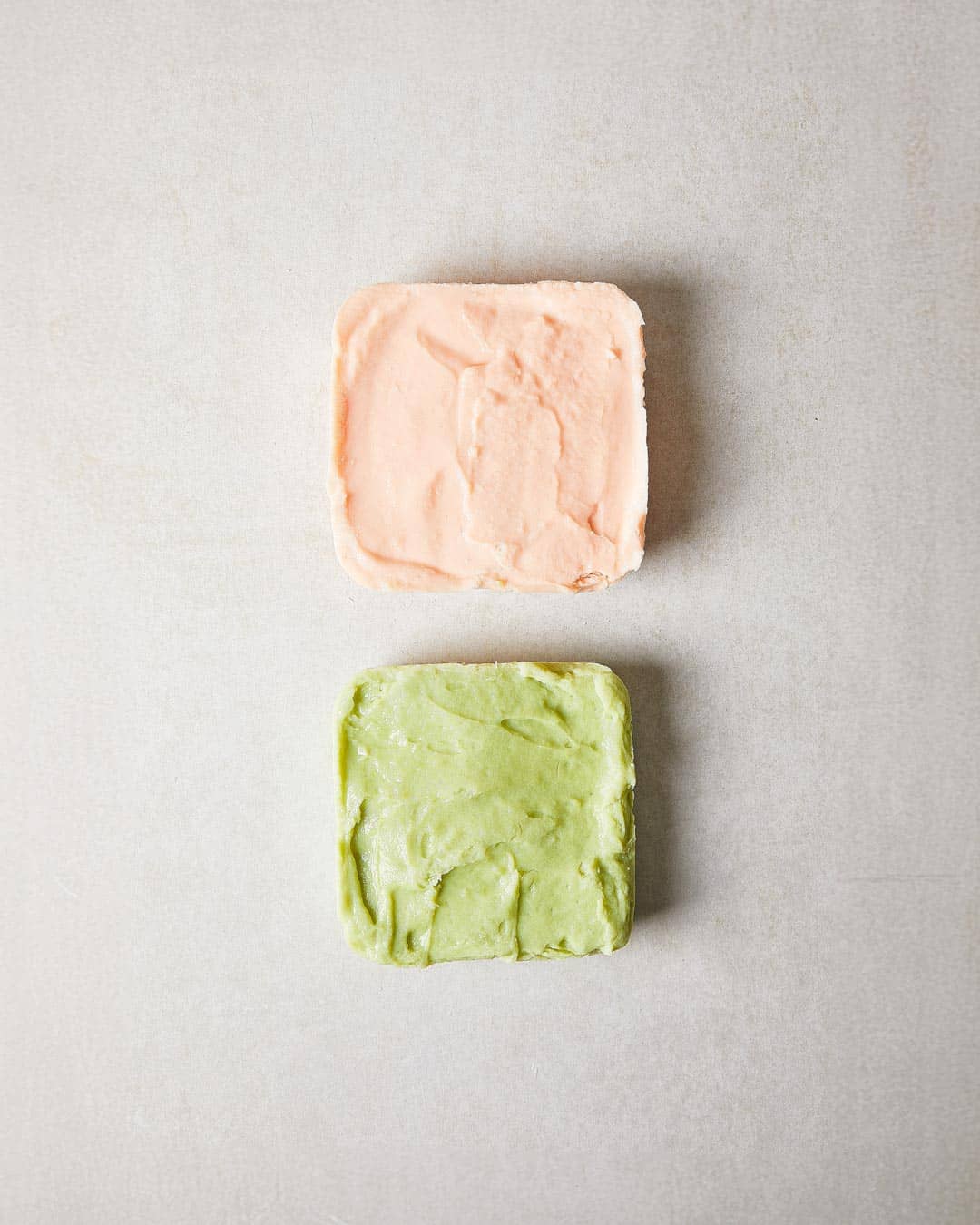
This is an exciting zero-waste update to the Any Legume Tofu I posted around one year ago. Ever since starting to make tofu out of different legumes (for instance, chickpeas, green peas or red lentils), I’ve been bothered by the amount of pulp that was leftover after straining.
Sure, you can use the pulp to thicken stews and soups or mix it into breads like this Sourdough Rye. But really, I was hopeful for a method that would avoid the pulp altogether so that the legumes retain all of their nutritional benefits. After some testing, I was finally able to tweak the recipe to a point where it doesn’t involve any straining at all. Plus, this is also an easy way to flavour the tofu in any way you like, for instance with ginger, chilli and turmeric as I’ve done here.
What is Any Legume Tofu? (Chickpea, Lentil or Green Peas Tofu)
Any legume tofu is a plant-based, protein-rich alternative to soy tofu made from legumes like chickpeas, lentils or green peas. If you are new to this type of tofu, let me rewind a little bit. This is not the traditional type of Chinese tofu, which is made by curdling soy milk and pressing the curds into a firm block. Instead, it is similar to Burmese Tofu, a common dish from the Shan minority in Burma (Myanmar) that is traditionally made with flour from split yellow lentils or chickpeas. Whether you’re making chickpea tofu for salads, lentil tofu for stir-fries or mung bean tofu for curries, this soy-free tofu is versatile and easy to prepare at home.
With Burmese tofu, the liquid is heated until it begins to coagulate and is then left to set into a soft block. Because of the difference in texture, you can’t use Burmese tofu as a substitute for firm soybean tofu, as it is rather delicate and might not withstand much stir frying or longer cooking times in liquids. I prefer cutting it into cubes and shallow frying them with a bit of salt until golden brown on each side. They can then be coated in your favourite sauce or spices and used to top off dishes or served as a side.
Although Burmese tofu is commonly made with chickpea flour, you can, in essence, use any dried legume and apply the same method by soaking and blending them.
IMPORTANT: Some raw legumes, especially certain beans, are not safe to consume, because they contain natural toxins as a defence mechanism against wild predators. For most beans, the cooking time in this recipe is NOT enough to break down the toxins. So far, I tested the method in this recipe with chickpeas, red lentils, green peas and olive green lentils, so ideally stick to any of those to be on the safe side. If you’d like to use beans, I’d recommend either adding more water and cooking the paste for at least 20 minutes or following THIS recipe and strain the beans to remove any larger particles that might not cook in time. Always make sure that your tofu has set properly, otherwise, start over instead of eating it anyway.
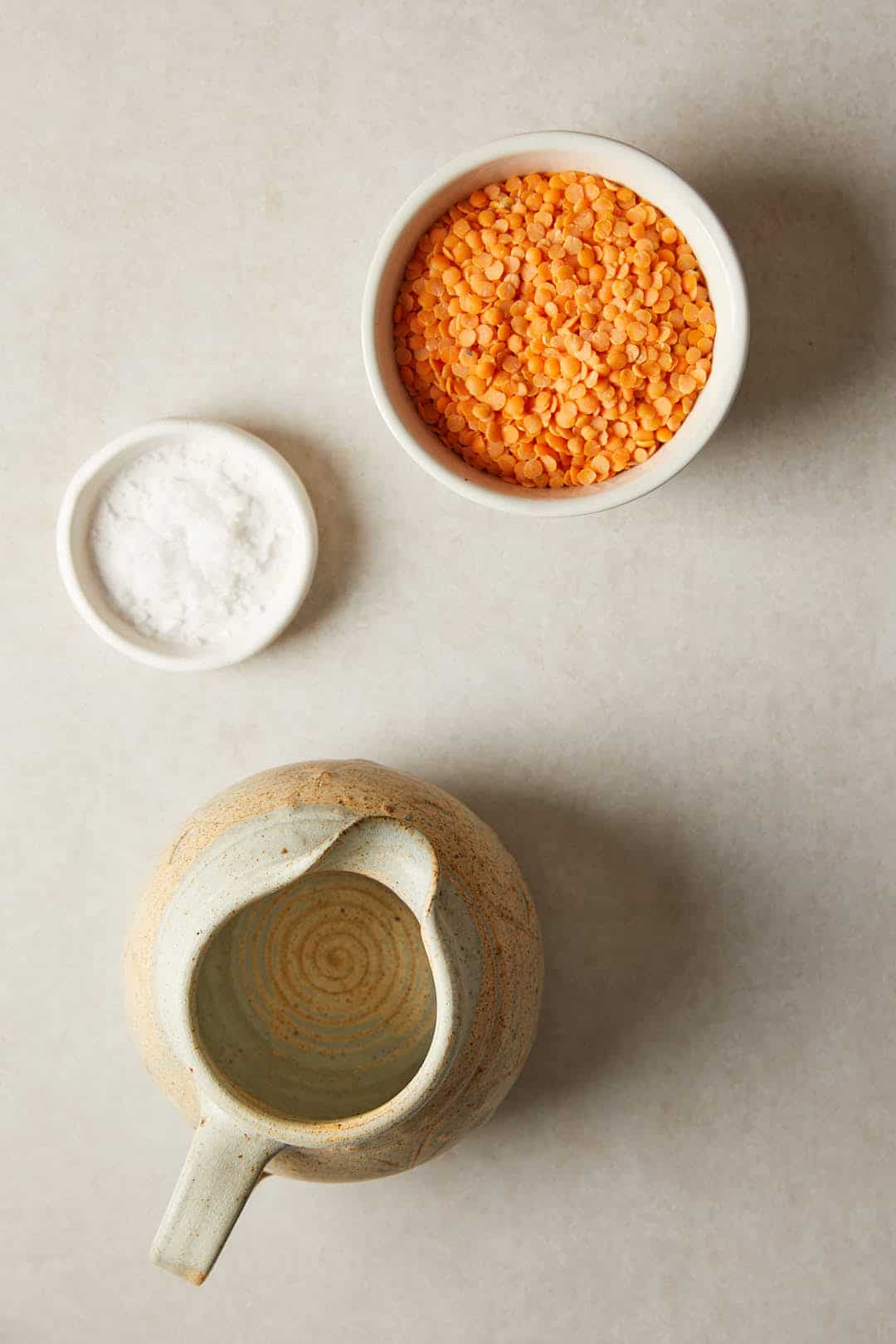
History of Any Legume Tofu (Burmese Chickpea Tofu Inspiration)
The origin of legume tofu can be traced back to Burmese Shan tofu, a centuries-old dish made from chickpea flour. Burmese chickpea tofu has been a staple in Myanmar, where it is often used in salads, stir-fries and soups. As more people seek soy-free options, the idea of using other legumes, like lentils and mung beans, has emerged. This evolution of chickpea tofu allows for even more variation in flavor and nutrition, making it a popular choice for vegan and gluten-free diets.
Why does it work?
Most legumes are high in protein (around 20%). By extracting and heating them, you can change the protein bonds, causing them to firm up. Most of us have already experienced this process before when boiling an egg, turning the white from translucent to firm. Although this works with any dried legume, it’s slightly different with soybeans, which are even higher in protein (around 40%) and therefore begin to curdle when heated in the form of soy milk like in this recipe.
One of my favourite ways to use Burmese tofu is to be inspired by other cultures who have long adapted the use of chickpea flour into creations like Panisse or panelle.
Ingredients You’ll Need and Substitutions
-
100g dried legumes* (chickpeas, lentils or peas)
-
250ml water
*if you’re using a different type of legume than recommended, please read the ‘IMPORTANT’ note in the description.
How to Make Any Legume Tofu (Step-by-Step Soy-Free Tofu Recipe)
Soak and drain. Soak the legumes in plenty of water overnight or for at least 8 hours.
The next day, drain the legumes.
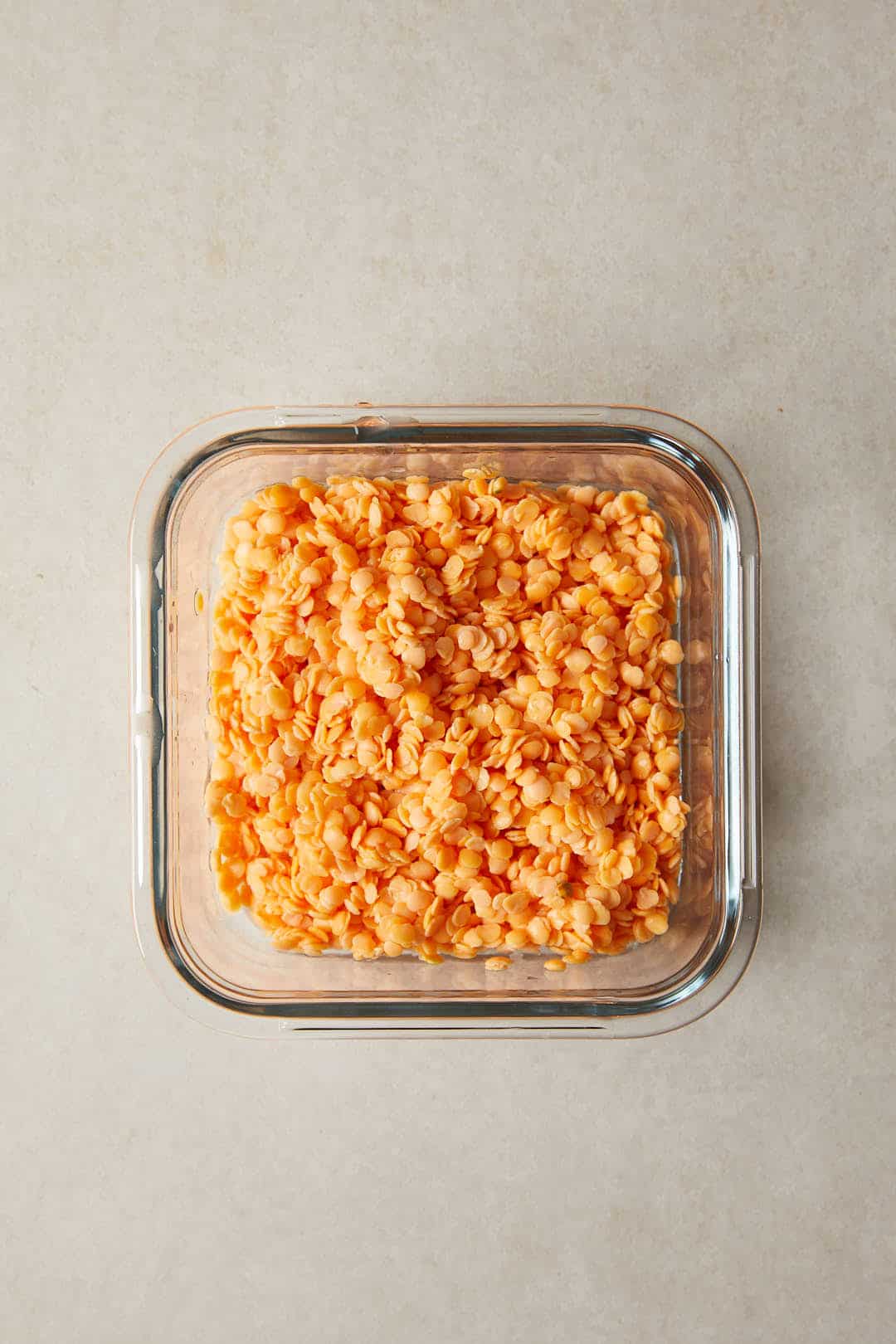
Blend the legumes. Add them to the jug of a high-speed blender (I use my Vitamix E310) together with 250 ml of water. Then blend for 1 minute on high speed until smooth.
Cook. Pour the mixture into a non-stick frying pan and stir in 1/2 tsp of salt.
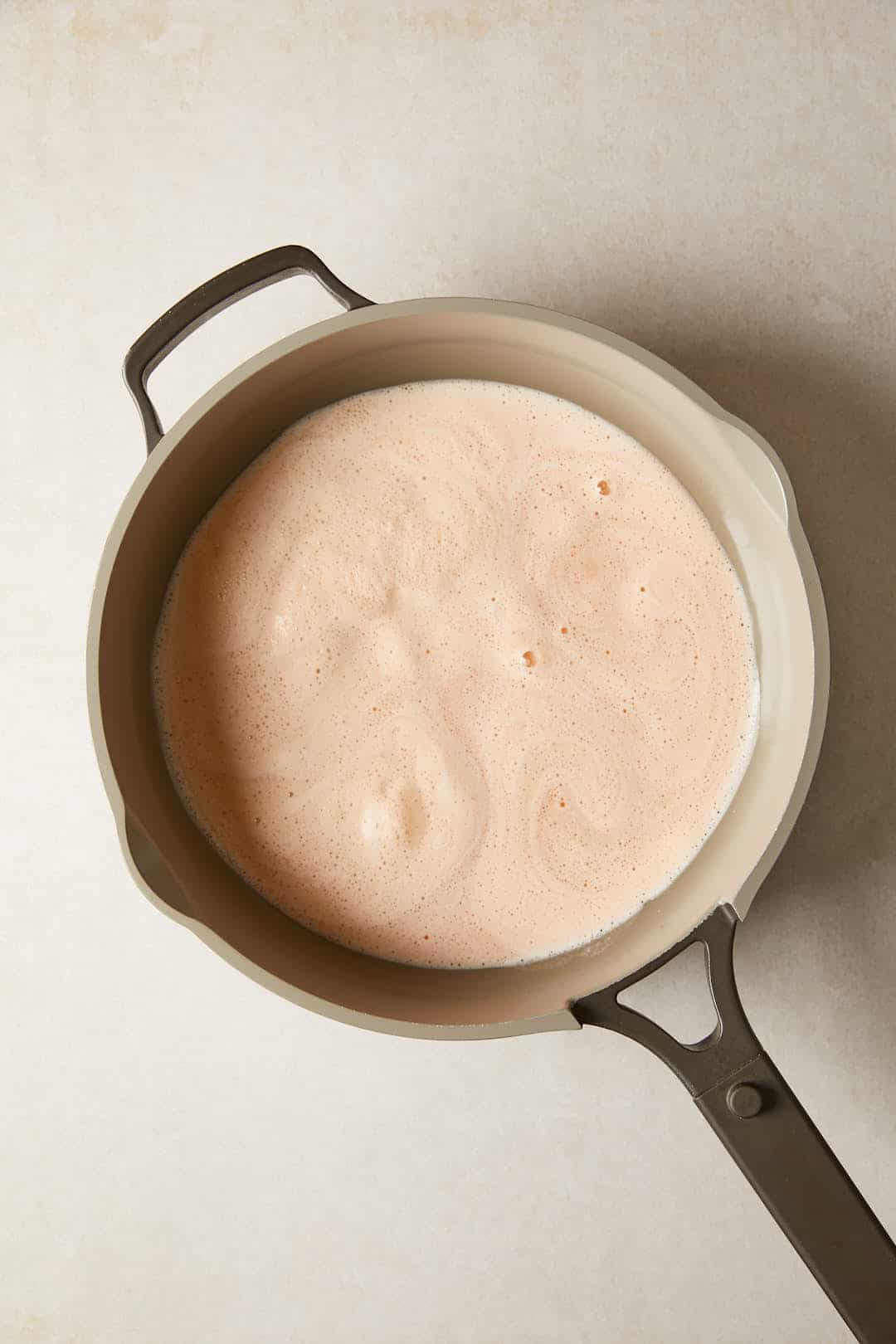
Bring it to a simmer, then reduce the heat and cook it for 2 to 5 minutes, stirring it constantly with a spatula. The starches will sink to the bottom and stick, so you must keep stirring to avoid it from burning.
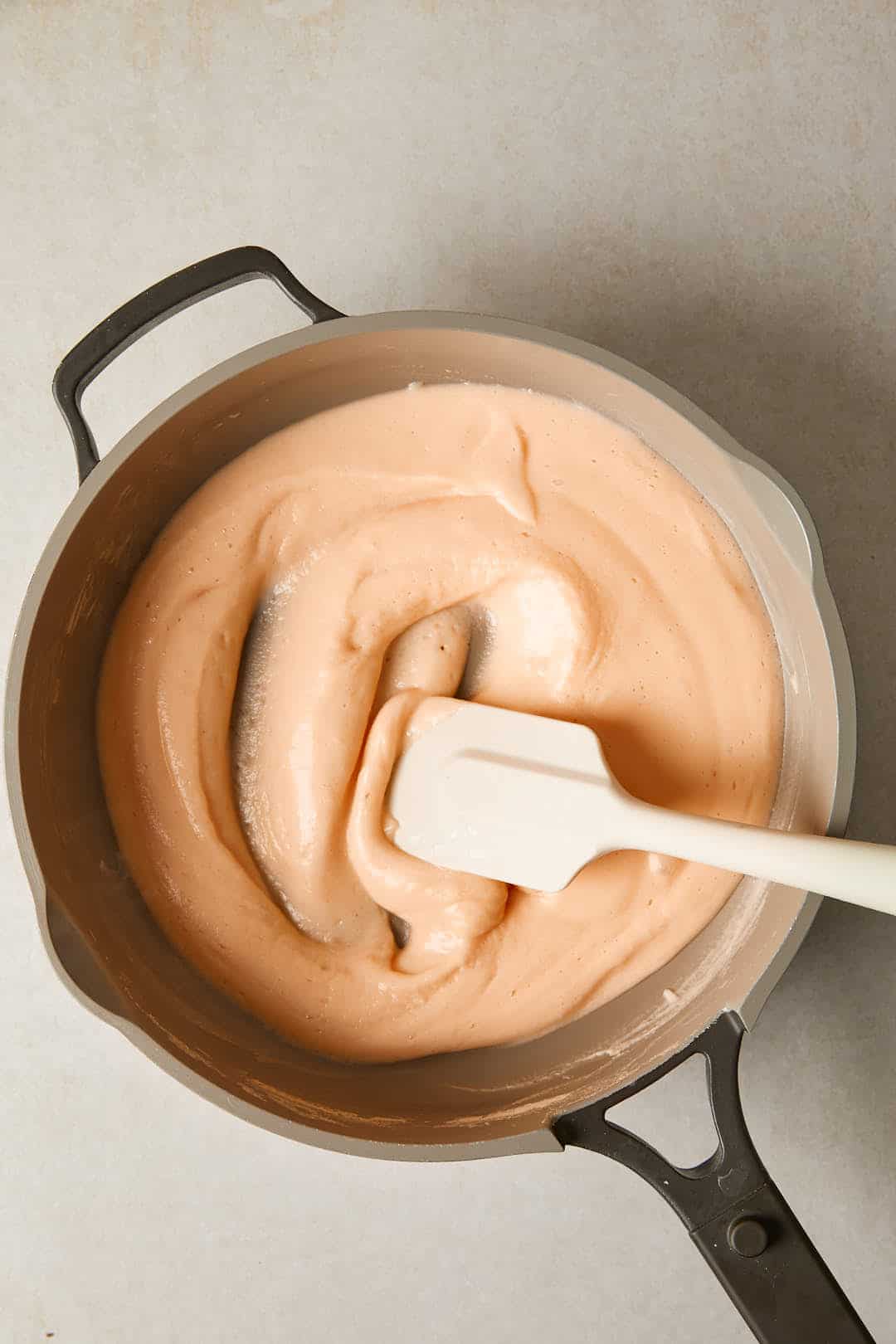
Continue cooking until it has formed into a thick paste that doesn’t level out in the pan anymore and holds on to the spatula.
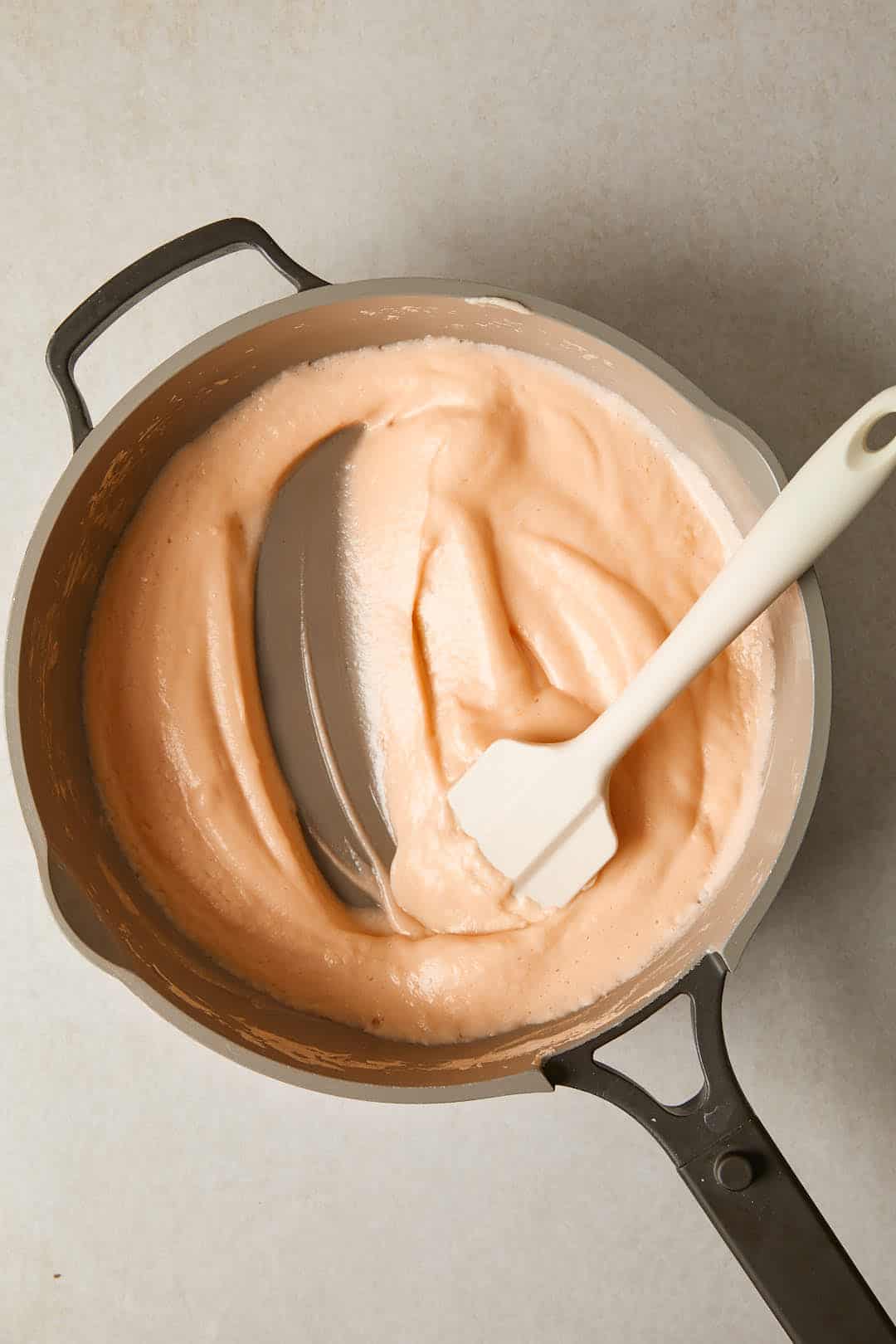
Set the tofu. If it’s still runny, just cook it a little longer. Once ready, transfer the mixture to a mould and let it set for an hour (ideally in the fridge) before using.
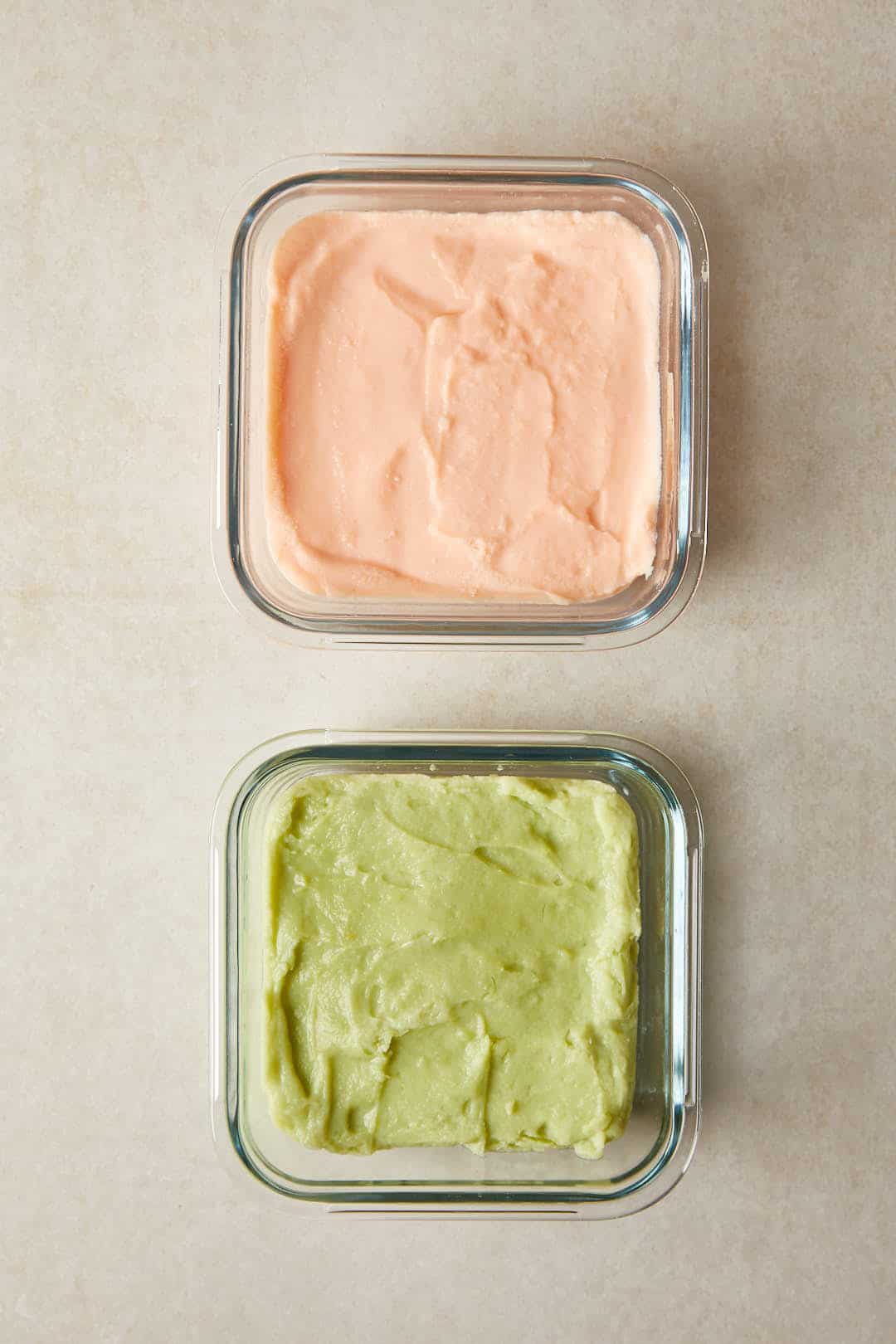
Cut and use in stir-fries, salads, curries or any dish that calls for tofu.

Useful Tips for Making Any Legume Tofu (Chickpea and Lentil Tofu)
- Constant stirring: To avoid lumps while cooking, stir the legume mixture constantly. A smooth texture ensures your tofu sets properly.
- Customize the flavor: Add herbs or spices like garlic, turmeric, or smoked paprika to your tofu mixture for extra flavor.
- Cooling time: Allow the tofu to cool completely before cutting to prevent crumbling. For firmer tofu, let it rest in the refrigerator.
Why You’ll Love This Soy-Free Tofu Recipe (Easy Vegan and Gluten-Free Tofu Alternative)
This soy-free legume tofu recipe is ideal for those following vegan, gluten-free, or paleo diets. It’s high in protein, easy to make, and versatile, making it a great addition to any meal. Inspired by Burmese Shan tofu, it’s a healthy alternative for anyone who prefers soy-free cooking or wants to try new plant-based proteins. Whether you choose chickpea, lentil, or mung bean tofu, you’ll love the flavor, texture, and ease of this homemade tofu recipe.
How to Store Any Legume Tofu (Storing Chickpea or Lentil Tofu)
To store your legume tofu, place it in an airtight container in the refrigerator for up to 5 days. For longer storage, you can freeze chickpea tofu or lentil tofu. Simply cut it into cubes, place them on a baking sheet lined with parchment paper, and freeze until solid. Then transfer the cubes to a freezer-safe container. Frozen legume tofu can last for up to 3 months and is perfect for stir-fries, soups, or quick vegan meals.
**I receive a small commission from affiliate links on this page**
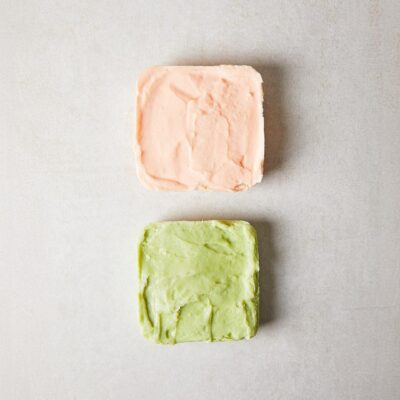
Any Legume Tofu (Zero Waste)
Ingredients
- 100 g dried legumes* (chickpeas, lentils or peas)
- 250 ml water
Instructions
- Soak the legumes in plenty of water overnight or for at least 8 hours.
- The next day, drain the legumes and add them to the jug of a high-speed blender (I use my Vitamix E310) together with 250 ml of water. Then blend for 1 minute on high speed until smooth.
- Pour the mixture into a non-stick frying pan and stir in 1/2 tsp of salt. Bring it to a simmer, then reduce the heat and cook it for 2 to 5 minutes, stirring it constantly with a spatula. The starches will sink to the bottom and stick, so it’s important that you keep stirring to avoid it from burning. Continue cooking until it has formed into a thick paste that doesn’t level out in the pan anymore and holds on to the spatula. If it’s still runny, just cook it a little longer. Once ready, transfer the mixture to a mould and let it set for an hour (ideally in the fridge) before using.

We tried making this today with red lentils and oh wow it was so good! It was a little squidgier than I had anticipated but after baked in the oven with coconut aminos and oil it was a real treat 🙂
Thanks for the awesome recipe
I’m so glad to hear that! Yes the texture is softer than traditional tofu, since it’s not curdled. Roasting it the way you did sounds delicious!
I tried this, and it was very easy and worked well. However, we vent it would have been much nicer had I seasoned the raw pulp before cooking it, which I shall do next time. I also want to try cooking the finished cubes on an air fryer.
Adding chilli and ginger to the mix when blending is a great way to flavour it. You can even throw in some coriander or spinach, especially for green legumes like mung beans or dried peas.
What spices should I use in tofu?
And
Would tofu with chickpeas or red lentils be more delicious?
I like adding aromatics like ginger and chillis to the blender and then some turmeric to the pan. Spices like ground cumin, coriander and black pepper will also work really well. I really like the chickpea tofu for flavour. The red lentil one has a slightly firmer texture. It definitely depends on personal preference though.
Have you tried adding sugar or other sweetener to it and using it as a dessert? I saw some comments on YouTube referencing that and I’m wondering about proportions.
Not yet, but I don’t see why it wouldn’t work. In a strange way, it could be nice before it sets, sort of like a pudding.
What are the calories? I cannot figure it out
Sorry, I currently don’t add those values to the recipes. Will try to do it in the future.
The calories would be whatever 100g of legumes is , like for red lentils I think it’s around 390 cal for 1 batch
Hi there! Is it possible to use mung beans to make tofu by this recipe? Would be grateful for your answear❤️
Absolutely, that should work really well. Let me know how you got on!
Hi, I just found your Any legume recipe on Pinterest and I have a question. Can you eat the tofu raw? I know there’s a cooking step, so I’m hoping it won’t be a problem. But since you cannot eat certain legume sprouts raw for example (like white beans) I was wondering if it wouldn’t be a problem too. I also struggle with IBS, so eating legumes for me usually poses a problem, but I’ll try it out anyways. Thank you!
Thanks for checking. Please read the full recipe on this page including the “IMPORTANT” paragraphs for more details on which legumes are safe to use and which ones you should avoid. Essentially, the tofu is already ‘cooked’, because you are heating the blended legumes. Whilst this is enough for some legumes, it doesn’t remove the naturally occurring toxins in others. You can find more details in both the body text and on the recipe card.
So essentially, the chickpea and lentil versions are okay to eat raw. Thank you!
After blending, you simmer the liquid, so they are not raw in that sense. But yes, you’ll be able to eat the red lentil and chickpea tofu after this stage. Please make sure that it is very well blended and doesn’t have any coarse bits of chickpeas left. If you don’t intend to cook it any further, I would recommend cooking it for no less than the 5 minutes after it came to a simmer.
Hey, I tried to do this recipe a few times but I really struggle to get a firm tofu block. Mine is often a bit runny after putting in in the fridge, even though I cooked it long enough. I’m not sure what I do different, any idea what causes the problem?
This type of Burmese-style tofu won’t get completely firm like a tofu made from soybeans. Having said that, it should still give a texture that you can cut and gently pan-fry. If that’s not the case, the first tip is always to cook it a little longer to reduce the moisture. If that doesn’t help, try it with a different legume like chickpeas or red lentils. Each legume yields a different result. Red lentils usually produce a tofu that’s a little ‘firmer’.
Please tell me you tried this with peanuts! Sounds like it could make some delicious dinners and desserts
I haven’t yet, but great idea! The natural fat in the peanuts might hinder the mixture to coagulate though. I will give it a go some time.
Really enjoying your recipes, experiments and enthusiasm.
I know you do lots of recipes with beans/peas/lentils as options for soy.
I made this red lentil tofu, did not strain out the pulp, and am very happy with the finished product.
Am trying same process but with soybeans. Adding a longer soak time, 24 hrs. I know the tofu will be less smooth and more like curds. Which I think is fine as I’ll puree it as a smoothie base.
But I’m wondering if you think there will be toxins like the kidney bean.
I’ll increase the cook time, maybe add another 10 mins.
I’m glad you’re liking the recipes! When soybeans are turned into tofu, they are also blended and strained. The leftover ‘soy milk’ is then cooked and curdled (with the help of acidity). To avoid any risk, I would recommend following the straining method for this one.
Hi, I just tried this today with red lentils! It turned out really well. I was surprised at how well it held it’s shape. This is probably going to become a common thing I cook.
I just wanted to add for others who might be reading – try coating the tofu blocks with cornstarch mixed with seasoning before frying them in a pan. It needs a bit more oil, but the result is like you battered and deep fried them. It’s SO good and goes really well in a thick and gooey asian-american style sauce (which you can use the leftover cornstarch to thicken) because it stays pretty crispy and crunchy despite the sauce. I totally recommend using this stuff as the protein in a vegan version of Beef Broccoli or General Tso’s Chicken 😀
I’m just so happy with how my meal turned out, thanks for the recipe ^^
Oh amazing, I’m so glad to hear that. And thanks for the tip about how to pan-fry them – sounds delicious!
Hi, I have one more question. I found with normal tofu, it tastes the best if I keep it submerged in water in the fridge. Since I would like to eat the tofu raw, I think it might be a good idea. What do you think?
Interesting – I haven’t tried this yet with a focus on flavour. Let me know if you think it works well 🙂
I found your recipe on Youtube, and really loved it!
I’m not vegan or vegetarian, but I’ve been trying to incorporate more plant based items in my diet, and this one is definitely staying!
I tried it with whey soaked red lentils for a little extra tang. Since I only have a regular blender, I found out that blending it first, straining, then returning the leftover pulp to the blender with and extra 1/4 cup of water really helped the texture!
The way it cooked up reminds me of Turnip Cake, which is usually made with mung bean starch.
I was wondering if you’ve tried steaming the tofu instead of cooking in the pan, I found it a bit tricky to fill the sides of my mold, but maybe I overcooked it.
(P.S. the link to the recipe in your YouTube video links to a picture and not here.)
I’m so glad you liked it! I haven’t tried steaming it yet, but that should work really well. And thanks, I’ve fixed the broken link now.
Very nice, although you might feel the stirring in your arm afterwards.????
Haha true! Glad you liked it though.
I made my tofu with yellow and green split peas and added garlic, onion, cumin, and smoked paprika for flavoring. Cooked it with soy sauce, and I’m obSESSED! This is also wayyyy easier than the chickpea one so I’m super pleased lol. Does it freeze well?
Love the sound of that flavour combination! Amazing! Red lentils also work really well 🙂 I haven’t actually tried freezing it, but I believe it should work as long as it feels quite firm rather than pasty.
Yes, I made this with red lentils, sliced it thinly, then put it in a small ziplock bag and froze it. It worked perfect for me 🙂
Amazing! Thanks for sharing.
Did this yesterday with red lentils and was well pleased with the results!
I added some seasoning once I added to the pan, which was a mixture of cumin, garlic powder and ground coriander.
Went well with the stir fry I made – it was very firm yet super soft to the bite and absorbed flavours much like soy tofu.
I’ll do this with other lentils next!
Amazing! Love the flavours you added!
If we add some condiments with similar color of the lentil in question plus powdered white pepper, salt, little sugar and lme juice, in my opinion, we could make a masala tofu which could be consumed with any modification of cooking style.
Exactly – these can be flavoured with spices and aromatics in pretty much any way you like. 🙂
Hi, I love your recipes. I’m currently struggling with this one. My first attempt I undercooked the peas in the pan and they didn’t set. So I added it back to the blender with a little more water, but then I think I overcooked them as I started getting chunks in the pan that were difficult to break up. What is the way too know I have cooked them the right amount? Both times I went off the instructions of making sure you could tilt the pan with hardly any movement of the peas
Hi David, thank you! Sorry to hear it’s causing trouble. It sounds like you’re not cooking it quite long enough. The legumes will coagulate unevenly at first, which might cause clumps, but these usually smoothen out as you continue to cook it. The instruction that it shouldn’t “level out” doesn’t apply to tilting the pan, but to when you stir the mixture. It should be so thick that when you stir through it with a spatula, the mixture doesn’t flow back in but instead stays in that pattern. You might also find the video helpful that is linked at the bottom of the page. Good luck and let me know how you’re getting on!
Do you think it is possible to use red beans or white kidneys beans I don’t really know if I can use them like the lentils or if I should use them like the black beans recipe ou not use them at all.
Kidney beans contain a toxin called phytohaemagglutinin and need to be cooked long enough to be safe to consume. For the sake of this recipe, I would avoid using kidney beans to be on the safe side. You can also try out the method in my other “Any Legume Tofu”, where I strain the liquid before coagulating it. That way, you remove the larger particles that wouldn’t cook enough. Make sure that it is well strained though and that the liquid has come to a boil before cooking it until thickened.
Hello,
I tried with a left over of dry mung dal chilka. All went well but when once the mixture ready to fry, I tried to fry small pieces of tofu, the cube melted and falling apart. And in the mouth the texture was not firm but like puree. Do you know why ? Thanks!
This type of tofu doesn’t really become firm like a soybean tofu. So it’ll almost remain quite soft to the bite. To achieve a texture that you can fry in the pan, it’s important to cook it for as long as it takes to coagulate into a very thick paste that’s not liquid anymore. After that, give it time to set in the mould. Using a non-stick frying pan helps to avoid it sticking and falling apart. Hope that works!
I tried to make one from red lentils, sadly, only with partial success.
The block formed very nicely and was quite firm. It was nicely cutable too.
However, as soon as i tried to fry it, it all turned to mush and lost any and all integrity. The chunks were impossible to turn in the pan, as you simply couldn’t grab them anymore.
I’m sorry to hear that. Compared to a soybean tofu, these legume tofus are very delicate and will never have a fully firm texture. The best way to fry them is in a non-stick pan with a little oil and without moving them too much. Once they’ve formed a golden crust, you should be able to flip them over. Hope that helps!
I love this recipe and have made with red lentils, a mix of black and red lentils and chickpeas. I add nutritional yeast, cayenne, black pepper, smoke salt and coconut aminos into the mix before cooking to flavour. I am interested in trying other beans and note your cautionary advice regarding cooking times, I usually bake my tofu after making it – 20 minutes in the oven – so it is crispy on the outside and soft on the inside. I was wondering if you would think that this would be enough to break down the toxins in the beans that require longer cooking? Many thanks.
Hi Nora, that sounds wonderful! Such good additions. Regarding the beans, I would still add more water when blending and then allow it to cook in the pan to break down the toxins. The additional bake will be added safety ☺️
How do you clean the pan after making the tofu? I used a non-stick pan, but unfortunately there was a thin layer still sticking to the pan and it was hard to remove it when dishwashing. Is there any trick?
I find that soaking it for 5 minutes in water will loosen the layer quite well
After I have cooked the mixture, but before I pan fry it, can I freeze the cubes? Thanks
Hi Deb, whilst you can freeze the tofu at this stage, thawing it will make it slightly more fragile and it might be trickier to keep its shape when frying it in a pan afterwards. Definitely worth giving it a go with leftovers though!
Yummy! I’m curious why do other recipes require straining? I found it was the perfect texture without straining.
Straining it gives it a more refined texture that some may prefer. I now also prefer the unstrained version because it omits waste. However, some legumes, like red kidney beans, need to be cooked very well if unstrained or they could upset your stomach. For those legumes, straining the liquid makes it much easier. There’s more info on this in the post ☺️
I just wanted to say thank you for the disclaimer with the other beans. Not enough recipes of this “legume tofu” include it and it’s quite dangerous. Also this is a great recipe and it’s awesome that’s it’s zero waste, thanks!
Thank you for noticing! Yes, definitely don’t want anyone to get sick from it! I’m glad you liked it.
The red lentil one was delicious & worked like magic! Thank you. I can’t find olive green lentils are they the same as just regular green lentils? They look the same/ similar in picture? Thanks 🙂
I’m glad you liked it! Olive Green Lentils is a specific variety that is grown here in the UK. They are a bit firmer then most green lentils, but for the tofu either will work. ☺️
Brilliant thank you. Strange they are grown here in UK and I can’t find them. Will try with regular green thank you for replying 🙏
I get them through a wonderful company called Hodmedod’s. Happy cooking!